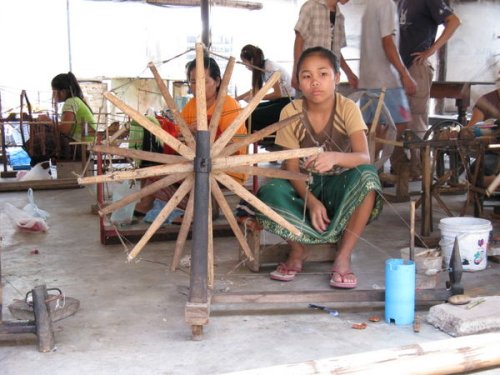Report On Child Labour Highlights Issues Of Concern
A child labour report launched in Vientiane on Friday uncovered issues which requires policy makers to address to ensure that disadvantaged children fully enjoy their rights.
Some 178,000 children below the age of 18 are considered to be engaged in child labour out of more than two million children in this age group nationwide, according to the report.
The National Child Labour Survey 2010 Report has been carried out since 2010, when the Lao population was about 5.8 million.
Seven child labourers out of every 10 have been found working more than 49 hours a week, more than the 46 official working hours stipulated in the Labour Law.
These findings indicate that these school-aged children lack the opportunity to study and develop themselves as other children their age are able to.
Worse, more than 130,000 child labourers, or two out of every three child labourers, are involved in what is defined as hazardous work, said the report, which is the first of its kind to be released in Laos.
Areas of work identified as potential dangers for children include construction and any form of work that involves chemicals or pollution, entertainment venues and the drug trade, said Deputy Director General of the Worker Protection Department, Federation of Trade Union, Mr Samanesay Khanthanouxay.
Mr Samanesay, who was present at the launch of the report on Friday, said children should not work more hours than laid down by law.
“The law stipulates that child labourers must not work more than 46 hours a week. This is not allowed by law,” Mr Samanesay said. “Only adults are allowed to work overtime.”
He said that anyone who is under 18 and found to be working is considered to be a child labourer.
However, the law allows children as young as 14 to work or be employed, Mr Samanesay said, adding that it was normal for least developed countries to allow young children to help their families make a living.
Most child labourers have been reportedly found in rural communities. Ninety percent work in agriculture, forestry and fishery. More girls than boys are child labourers. Of the total 178,000 child labourers, 96,000 were girls and 81,000 were boys, according to the report.
Deputy Minister of Planning and Investment and Director General of the National Statistics Bureau, Dr Samaychanh Boupha, said the findings are valuable for development planners, who can make use of them when drawing up plans involving labour data.
Deputy Minister of Labour and Social Welfare, Ms Baykham Khattiya, reiterated that the Lao government attaches great importance to appropriate working conditions and labour issues involving children.
She said Laos was a state party to eight international labour conventions, including five core conventions such as the International Labour Organisation (ILO) Convention on the minimum age for admission to employment and work, and the Convention on the worst forms of child labour.
Officer in charge of the ILO country office for Thailand, Cambodia and Laos, Mr Maurizio Bussi, said it was essential to keep up to date with fast-changing labour market information in order to have an accurate database for policy decisions. The survey was financially and technically supported by the ILO.
published with the permission of Vientiane Times

